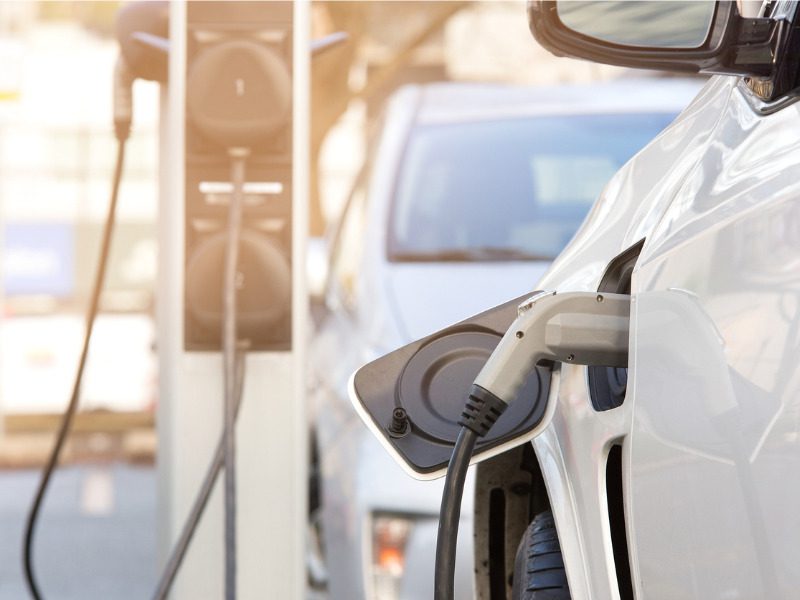Are electric vehicles cheaper to insure?

Insuring an electric vehicle (EV) may be cheaper than a gasoline vehicle, but it depends on a multitude of factors that varies for each consumer and the vehicle they’re comparing, according to rate comparison site RatesDotCa.
“Many EVs come with advanced safety systems that make them less likely to be involved in a collision, which can drive rates down,” the rate aggregator said. “Still, the hardware powering those systems (not to mention the battery pack) tends to be pricey to replace if damaged, which can drive your annual rate up.”
As well, because EVs can have expensive, tech-savvy features, policyholders may expect higher premiums.
But in very general terms, insurance rates are cheaper for EVs compared to gasoline-powered vehicles, although “annual auto insurance costs were surprisingly tight,” RatesDotCa said. For example, earlier this year the aggregator used its auto quoter and an identical profile for drivers and coverage (30-year-old female, 10 years of driving experience on a full licence and clean driving record). It used the Nissan Leaf, named the cheapest EV to operate since 2018, and a gas-powered Honda Civic and Chevrolet Cruze.
In both Toronto and Calgary, the Nissan Leaf was cheaper to insure, but sometimes only between $37 and $66 compared to the Cruze. The largest difference for the profile was between the Leaf and Civic ($211 more expensive for gas-powered in Toronto and $348 in Calgary).
iStock.com/AlbertPego
However, operating costs for EVs tend to be “substantially lower” than for petrol-powered vehicles, RatesDotCa noted. For example, a Nissan Leaf costs about $400 a year to drive 20,000 kilometres, while an equivalent gas-powered vehicle would cost $1,848.
Maintenance costs can be lower, too. While a battery replacement may be expensive, warranties tend to last for at least eight years. And because of regenerative braking—where the motor slows to reclaim energy—brakes usually last for up to 300,000 kilometres (EV brake pads can sometimes last even longer).
Federal government and insurance discounts are also available. The federal government offers rebates of up to $5,000 under its iZEV program for those who purchase select zero-emission vehicles. Insurers like Desjardins and TD Insurance offer green incentives for insurance buyers.
Aviva Canada received introduced a $2,000 subsidy for customers who upgrade to an EV after a total loss of their gas-powered vehicle. “It’s offering other perks, including enhanced battery protection if the battery is damaged in an accident, free towing to a charging station in the event of a dead battery, and a premium discount of up to 10%,” RatesDotCa reported.
On the flip side, some EV owners have reported battery-related issues (up to and including outright battery failure), which can be extremely pricey to fix, RatesDotCa said. “But the vast majority do not. In fact, EVs come with a lengthy warranty period covering their battery and electrical components.”
The norm is eight years, or 160,000 kilometres of coverage, with some automakers offering longer warranty periods.
Nowadays, unpredictable fuel costs are a primary driver of customer interest in EVs. “Also, where your gasoline-powered car or truck requires regular oil changes, tune-ups, filter changes and the like, maintenance with an EV is nearly nil. The EV has no oil or filter to change, no gaskets or spark plugs to wear out, no transmission fluid to flush, and tune-ups can be done via automatic software updates right in your driveway while you sleep.”
And in terms of vehicle safety, occupants in EVs and hybrid models are less likely to be injured in a crash than people in similar gas-powered vehicles.
A report by Chicago-based CCC Intelligent Solutions found EVs tend to weigh more than gas-powered vehicles due to the lithium-ion batteries in EVs.
“Unfortunately, when one of these heavier vehicles hits a lighter weight vehicle, the occupants in the lighter weight vehicle are at higher risk for injury as the added weight increases the force of impact,” said the report, Electric Vehicles Go Mainstream – Implications for the P&C Insurance Economy. “The way vehicles have been designed for crash worthiness may need to change as well, as some of the heaviest components of the vehicle, like the engine, have been moved to the base or rear of the vehicle, potentially changing the types and severity of motor vehicle injuries.”
Feature image by iStock.com/NikolayShubin



